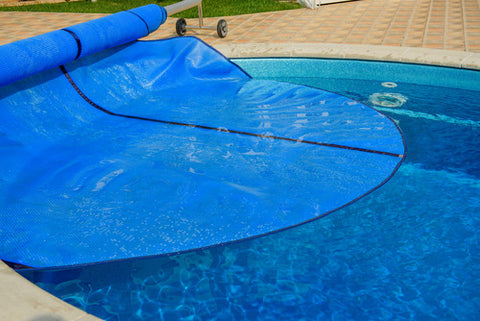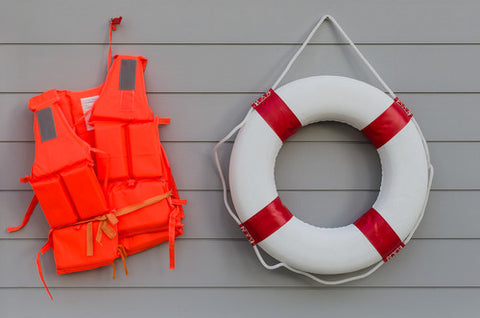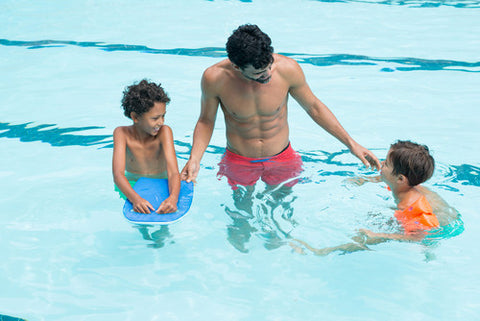Swimming Pools are a great thing to have in your back yard, especially during the blazing heat of summer. They can improve your home’s value and serve as a place for you to relax. Millions of people across the United States enjoy their backyard pools, using them to cool off and play. However, every year, nearly 3,600 people drown in their own pools accidentally. That’s nearly ten people every day. Even more tragically, one in five of them are children under the age of 14. Drowning is the second leading cause of accidental deaths for children under five years of age.
According to the Red Cross and the National Swimming Pool Foundation, there are several precautions that homeowners can take to prevent these tragedies.
1. Install a Pool Fence

It has become mandatory in many cities and towns across the United States that a new pool must be enclosed in a fence. A fence can prevent young children from accessing the pool area without your knowledge. While it won’t stop willful trespassing, a simple fence with a self-closing, self-latching, and child-resistant gate can stop tragedy from occurring. According to the Consumer Product and Safety Commission, a pool fence should be at least 4 feet tall and constructed of non-climbable materials. Additionally, an alarm should be installed on the gate to alert you if someone tries to access the pool without your knowledge.
When building the fence, make sure that it surrounds the pool completely. Don’t rely on your home to provide one of the sides. If it does, ensure that the doors leading to the pool also have alarms on them or that they have self-latching devices to prevent young children from getting to the pool area without you knowing about it. Remember that the goal of the pool fence is to prevent people from gaining unauthorized access to the pool by going over, under, or through it.
If you have an above ground pool, it should also have a fence around it, along with some means to control access to the ladder or entry point. Most new pools have a removable ladder, or you can build a fenced enclosure to prevent access.
2. Install a Pool Cover

A pool cover should also be used when the pool is not in use. Properly installed, a cover prevents young children from falling into or using the pool. For a pool cover to be considered a safety cover, they have to adhere to a guideline that measures the standards for swimming pool covers. This guideline ensures that a pool cover has passed strict weight tests for the material so that anyone walking onto the cover will not tear it. They also have to pass a strict test regarding the edges of the cover. This means that the cover cannot allow pets or small children to lift or access the pool by lifting or going under the edges. Additionally, safety pool covers allow for drainage so dangerous amounts of water cannot be collected on the surface.
3. Have Pool Safety Equipment on Hand

There are several safety items that you can have near your pool to help should someone begin to have trouble while they are swimming. A ring buoy can be hung on the pool fence and thrown into the water. These round hard plastic or foam flotation devices give a struggling swimmer something to hold on to so that you or someone else can pull them to the side of the pool.
A Shepard’s hook is a metal loop shaped into a hook that attaches to a telescopic pole that you use for skimming and removing debris. Essentially, if someone is struggling in the water, you use the pole to extend the hook out to them. This gives them something to latch onto and you can quickly pull them to the side of the pool. Shepard’s hooks are relatively inexpensive and can also be used to retrieve items from the pool when you’re cleaning, giving them versatility as well.
Use a preventive measure as well. A US Coast Guard approved life jacket can help keep kids who aren’t strong or experienced swimmers safe. A jacket will not make children drown-proof, so there should still be constant supervision.
4. Communication

While you can’t prevent someone from getting to your pool if they really want to, one of the best ways to keep your own children safe is to talk to them. Let them know about the dangers of the pool and why they shouldn’t try to go out on their own. Teaching them to respect the pool will help ensure that they enjoy the pool responsibly.
Set safety rules for your kids, ensuring that they don’t swim alone and they stay away from drains and pipes. Your drains should have safety covers that prevent entrapment, but kids should still be taught to stay away from them.
Pool safety is something that every homeowner with a pool should take very seriously. Kids can drown in only a few inches of water and tragedy can strike quickly and silently. Make sure that you’re doing everything you can to protect your family and the families of your neighbors and friends. After all, like the saying goes, “An ounce of prevention is worth a pound of cure.”


